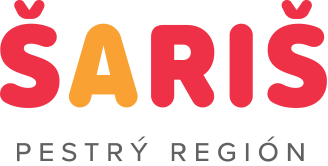According to the inscription of the portal, the Church of St. Michael the Archangel, also called the Wooden Church, was built in 1777 as a three-part log building, protected from the outside by vertical slabs. It stands on a raised stone base facing the west. The entrance to the vestibule is in the west. Be sure to notice the roof over the space between the tower and the nave and between the nave and the sanctuary. The temple was renovated in 1902 and then again between 1946 and 1947. The current appearance is the result of renovation works which took place in 2001 – 2002. The interior includes four Rococo candlesticks from the second half of the 18th century.
The vestibule of the temple is formed by an attic harmoniously incorporated into the structure of the wooden building. The self-supporting tower and the three-stage, four-angle pyramidal dome above the sanctuary and above the nave are topped with small baroque onion domes with wrought metal crosses. The pyramidal roof of the sacral building and the tower are covered with shingles. The log house and the two upper floors of the tower are vertically clad with boards and slats.
The iconostasis dates from the second half of the 18th century. It is wooden, polychrome, with four tiers of icons and royal doors and is decorated with carvings and paintings. Some icons are from the 17th century.
In the main tier of icons are the icons of the Holy Bishop Nicholas, the patron saint of the Eastern Church, Hodegetria, Madonna with a child sitting on her left hand, Jesus Christ the Teacher and St. Michael the Archangel. The deacon’s door is not fitted with a leaf. The royal double-leaf door contains six medallions depicting four evangelists and scenes of the Annunciation. The second tier depicts the main holidays of the Greek Catholic Church with the icon of the Last Supper in the middle. The third tier consists of the icons of the apostles in the middle with the icon of the Christ Pantocrator. Christ blesses the people of good will with his right hand and has a halo over his head. The fourth tier consists of ten medallions depicting the prophets. At the top of the iconostasis is the icon of the Crucifixion. On the sides are the figures of the Virgin and St. John the Evangelist. There is also the icon of St. Bishop Nicholas, the patron saint of the Eastern Church, from the 16th century.
On the Rocaille-style altar stands an icon of the Crucifixion. Remarkable are the icons depicting the alleged imprint of the face of Christ on a canvas scarf and St. Michael and St. Nicholas from the 17th century.
The temple originally had three bells, one of which weighed 200 kg. In 1915, the Austria-Hungary officials had two bells, the smallest and the largest, removed and used them for military purposes. Today, the tower boasts three bells again – one of which dates from 1759. The other two bells were bought by the locals and date from the 1920s.

